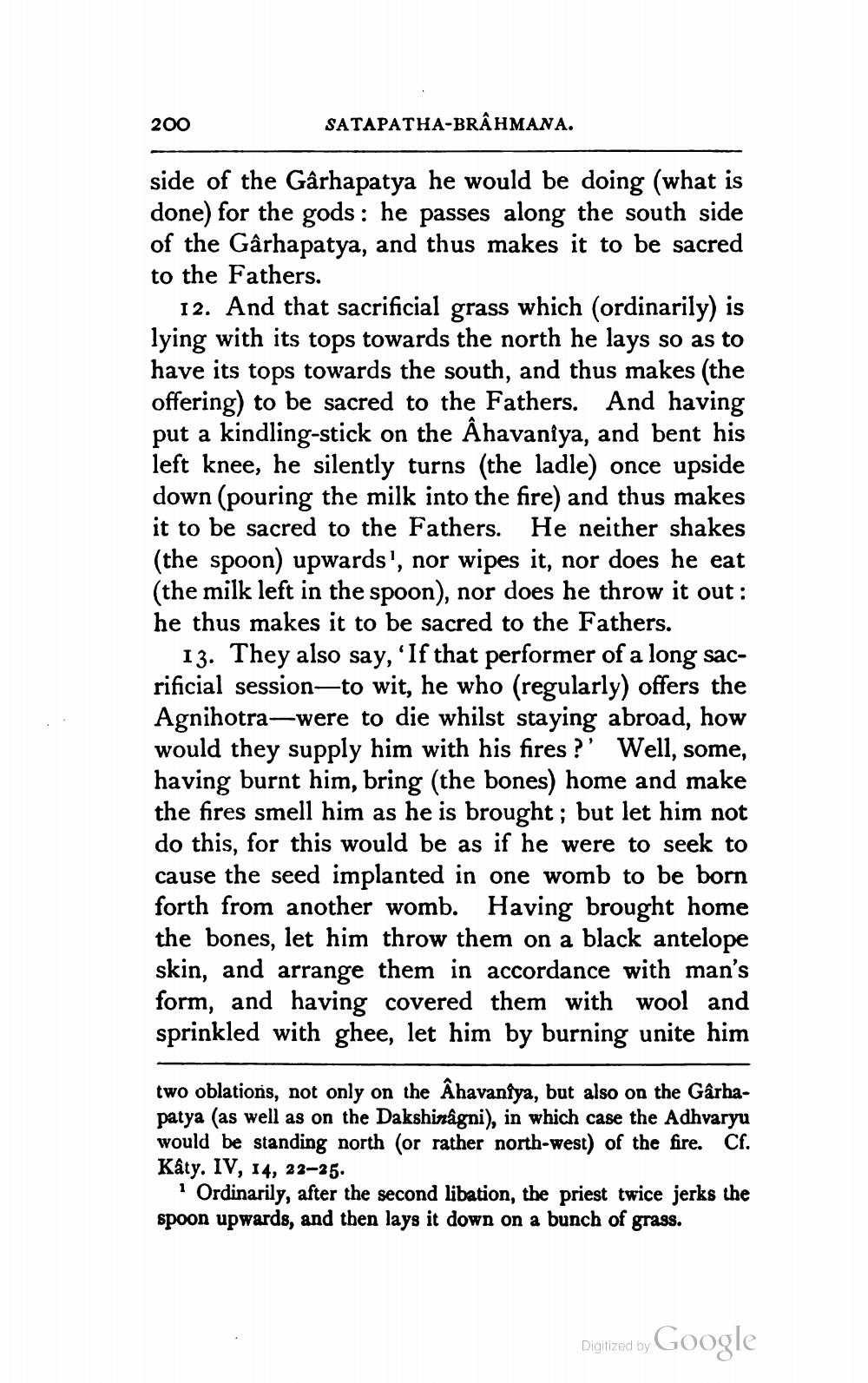________________
200
SATAPATHA-BRAHMANA.
side of the Gârhapatya he would be doing (what is done) for the gods: he passes along the south side of the Gârhapatya, and thus makes it to be sacred to the Fathers.
12. And that sacrificial grass which (ordinarily) is lying with its tops towards the north he lays so as to have its tops towards the south, and thus makes (the offering) to be sacred to the Fathers. And having put a kindling-stick on the Âhavaniya, and bent his left knee, he silently turns (the ladle) once upside down (pouring the milk into the fire) and thus makes it to be sacred to the Fathers. He neither shakes (the spoon) upwards', nor wipes it, nor does he eat (the milk left in the spoon), nor does he throw it out: he thus makes it to be sacred to the Fathers.
13. They also say, 'If that performer of a long sacrificial session—to wit, he who (regularly) offers the Agnihotra—were to die whilst staying abroad, how would they supply him with his fires ?' Well, some, having burnt him, bring (the bones) home and make the fires smell him as he is brought; but let him not do this, for this would be as if he were to seek to cause the seed implanted in one womb to be born forth from another womb. Having brought home the bones, let him throw them on a black antelope skin, and arrange them in accordance with man's form, and having covered them with wool and sprinkled with ghee, let him by burning unite him
two oblations, not only on the Ahavaniya, but also on the Garhapatya (as well as on the Dakshinagni), in which case the Adhvaryu would be standing north (or rather north-west) of the fire. Cf. Kâty. IV, 14, 22–25.
Ordinarily, after the second libation, the priest twice jerks the spoon upwards, and then lays it down on a bunch of grass.
Digitized by Google




